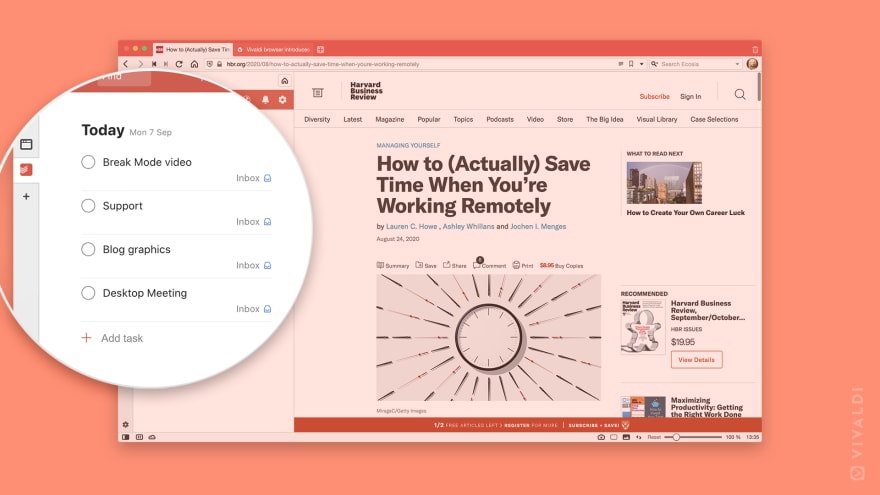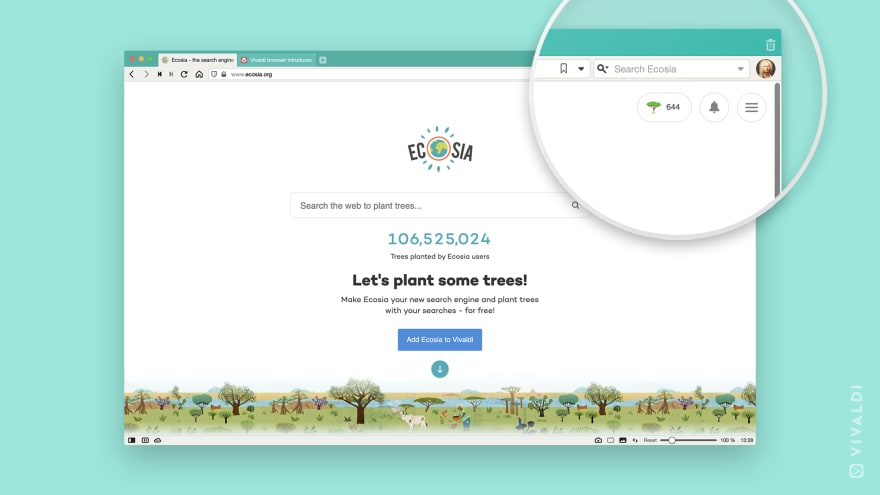On paper, working from home should boost your productivity. When you work from home, there are fewer distractions, less stress from commuting, and no office politics to navigate.
At least one big study carried out at the beginning of the pandemic indicates that you are more productive working from home.
But six months on, it looks like we’ve yet to learn how to work remotely and stay efficient.
Just last week the Harvard Business Review published a study of the productivity of 12,000 people working from home across the U.S. and Europe. The study indicates that we don’t use wisely the time we save from commuting. This time – around 89 million hours each week for workers in the U.S. – is getting wasted on unproductive work and poor choice of leisure activities.
The truth is that many of us are learning through trial and error, adjusting to this new way of working as we go along.
Luckily there are tried and tested techniques, as well as many reliable tools, that we can all use to stay productive working from home.
Productivity tools for working from home
Starting in the spring, I’ve been experimenting with work from home productivity tools and, surprisingly, have found that I need just 3 tools:
- Vivaldi browser with its multiple built-in productivity tools.
- Todoist.
- Ecosia (yes, I’ll get to this in a minute).
With these 3 tools I’ve been able to use the top tried and tested work from home techniques:
- Follow a schedule.
- Take regular breaks.
- Focused work.
- Motivation practice.
- Switching off.
Let’s take a look.
Follow a schedule
Following a schedule should be a no brainer but in fact, working from home has made many of us forget this good old productivity practice.
Personally, I know that this is something I did very badly at the beginning. It just never occurred to me that by losing my commute, I had lost my daily routine of transitioning into work mode.
It took me a while to realize that I needed a new routine.
On my way to the office, I would take 10-15 minutes to make a mental note of things I would work on – shifting my focus to work. Working from home, I just jumped into the day.
Setting time aside to plan your workday, is a great way to transition into work mode when working from home. If you don’t schedule everything, there’s a very good chance that you’ll spend your day reacting to whatever comes up and not get to your core tasks.
There are many time-management tools out there, not to mention that you can simply use pen and paper to plan your day. Whatever works for you!
Some of our users swear by the ultimate digital to-do list, Todoist. You can use this productivity tool directly in your browser or via an app. I use it in a Vivaldi browser Web Panel.
Productivity = @vivaldibrowser + @todoist as web panel. 👌
— Victor Grimaldo (@victorgrimaldo ) September 4, 2020
You can schedule your tasks, activities, meetings, and block time for focused work. You can flag priorities and assign due dates. You can even add notes to your tasks.
Personally, I always have a “must do” for the day. This way, whatever happens, I know that I can tick off my list at least one major thing.
Take regular breaks
Plenty of research points to something that is common sense but hard to do when you work remotely. If you don’t take breaks, you’re always on and your focus will gradually diminish.
In one of several surveys on remote working conducted since the beginning of the pandemic, 37% of people said that taking breaks was their key to staying productive while working from home.
For the millions of people working remotely, the Internet is always on. But being present outside the browser is good for productivity. Everyone needs to take breaks and recharge!
That in a nutshell is why we recently created Vivaldi browser’s Break Mode, which I have been using since it first appeared in a Snapshot.
Vivaldi may be about giving you the tools to stay productive, but we also want to empower you to manage your time and focus on the all-important work-life balance.
Break Mode lets you pause your browser so that you can interact with the physical world.
It couldn’t be more simple to use.
How to use Break Mode in Vivaldi browser
- Hit the Break button (that little pause-looking button on the left of the Status Bar) to pause your browsing activity. Everything will disappear from your browser window, video and audio will pause.
- Take a break and focus your attention elsewhere – grab a cup of coffee, exercise, make a phone call, talk to someone, or even take a power nap.
- Resume exactly where you left off by pressing the Play button (in the same place).
Focused work
Staying focused and productive while working from home is always a challenge.
There are many techniques and tools for this and you should read up on some of them but one of the most effective ones I know about is the Pomodoro technique.
With the Pomodoro technique, you break the work down into short intervals and space them out by short breaks. More specifically, you set up a timer to 25 minutes and do your focused work in this interval (called “Pomodoro”). Then you take a 5-minute break before you start another 25-minute Pomodoro cycle.
At Vivaldi, we are huge fans of this technique and a while back we integrated a unique Pomodoro timer in the Vivaldi browser.
@vivaldibrowser, +10points for adding Pomodoro timer to the new browser clock! 😀
— David "The Bald Ginger" du Toit (@ddtpoison777) April 24, 2020
How to use the Pomodoro timer in Vivaldi browser
- Left-click on the Clock button (far right on the Status Bar) to bring up the Clock popup.
- Click on the Pomodoro preset.
- Click the Start button.
- A notification sound will go off in 25 minutes.
If you find that your needs are different (perhaps 25 minutes are too short or too long for you), experiment with durations until you find something that works for you. You can edit the duration of your “Pomodoros” in the Clock menu.
The Pomodoro technique was invented in the early 1990s by the developer and author Francesco Cirillo. The method is named “Pomodoro” after the tomato-shaped timer Cirillo used to track his work as a university student. 🍅
The premise of the Pomodoro technique is simple. When you are faced with a large task or a series of tasks, break the work down into short intervals and space them out by short breaks.
The Pomodoro technique will train your brain to focus for short periods of time and help you stay productive and focused. You’ll notice that, over time, it will improve your attention span and concentration in addition to making you more productive.
This technique will help you come back to your task more focused.
Motivation practice
When you work from home, it’s easy to feel isolated. That may be the one really big downside to remote working.
You lack an overview of things. The sense that what you do is meaningful can really take a beating. And when you lose the big picture, it’s easy to assume that you haven’t accomplished anything.
Getting people to feel that the work they do is making a difference, is much more important now than it ever was.
This is one area that is evolving and employers are eager to learn how to tackle this – how to make sure that employees are staying productive and motivated.
While employers are figuring this one out, people are finding their own ways to cope.
One tool, in particular, took me by surprise and I’ve stuck with it.
Sometime this summer, I decided to try a different search engine from the one I was using. I got hooked on Ecosia, the search engine that plants trees.
As I search the web, Ecosia plants trees – 80% of their profits go for planting trees. Ecosia plants in areas where trees are needed the most benefiting people, the environment, and local economies.
Every time I perform a search, I catch a glimpse of my personal Ecosia tree count at the top of the screen. And no matter how overwhelmed, disorganized, or isolated I might feel stuck at home in front of my screen, I know that my time spent online isn’t wasted. Planting trees is uplifting. It feels good!
Ecosia is completely transparent and publishes its monthly financial reports, so I can see exactly where the income from my searches goes. As a bonus, they don’t sell my data, have no third party trackers, and anonymize all searches within one week.
Switching off
Switching off – the final productivity technique I practice – may be the hardest to achieve. At the core of it is maintaining a healthy work-life balance.
Again, easier said than done. Without an office to get to, it’s a real challenge to draw the line between work and home. Without the commute, it’s a struggle to separate work from personal life.
Yet, if you don’t find a way to do this effectively, your work responsibilities will creep into your “life”, eating up more of your free time. You really need to have dedicated work hours just like you would in the office.
In the Vivaldi browser, we’ve built in a tool that might just be the answer to this problem.
With the theme-scheduler, you can schedule different themes for different times of the day. For example, you can schedule a light theme for your working hours, and have your browser switch to a dark theme at the end of the working day. That’s a great way to designate the end of work each day. The cue would be hard to miss.
You could also set up entirely different work and personal profiles in Vivaldi browser – that way you can keep work and life completely separate.
In order to boost your productivity – and health! – you need to unplug from work.
If you stick to the techniques above, you will be productive and efficient throughout the day.
Surprisingly, I only use 3 productivity tools. At the core, sits Vivaldi browser. Then I have Todoist and Ecosia, the latter for that uplifting feeling of doing my bit for the environment.
Try these techniques and tools. It will be easier to walk away from your work feeling that you have accomplished something.
What better way to put an end to another successful day working remotely?










Top comments (1)
Terrific! Pomodoro technique is the best and works for me. However, I switched from Todoist to Quire a while ago because Todoist wasn't working with my team and we prefer Quire as it is straighforward and robust.